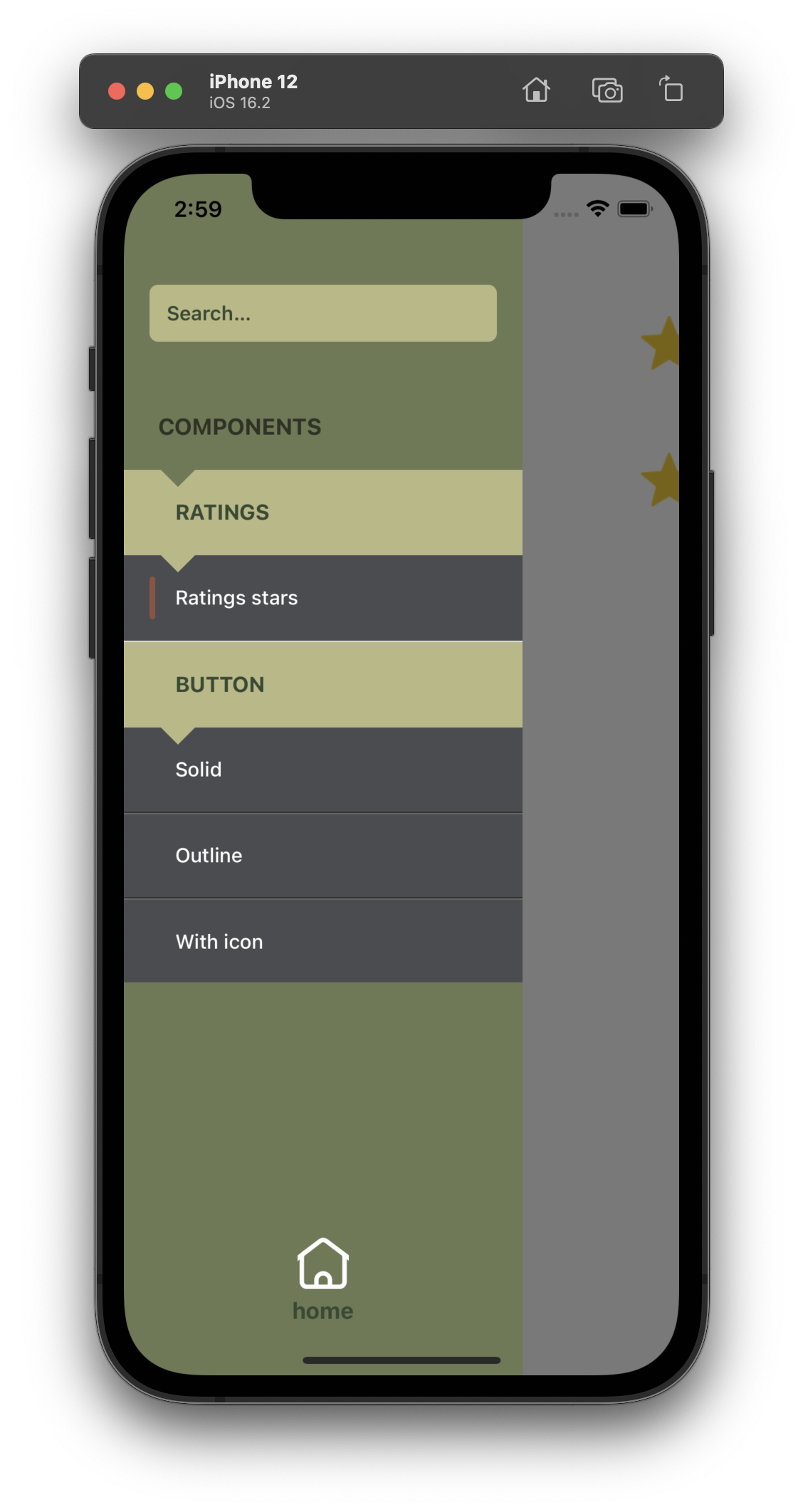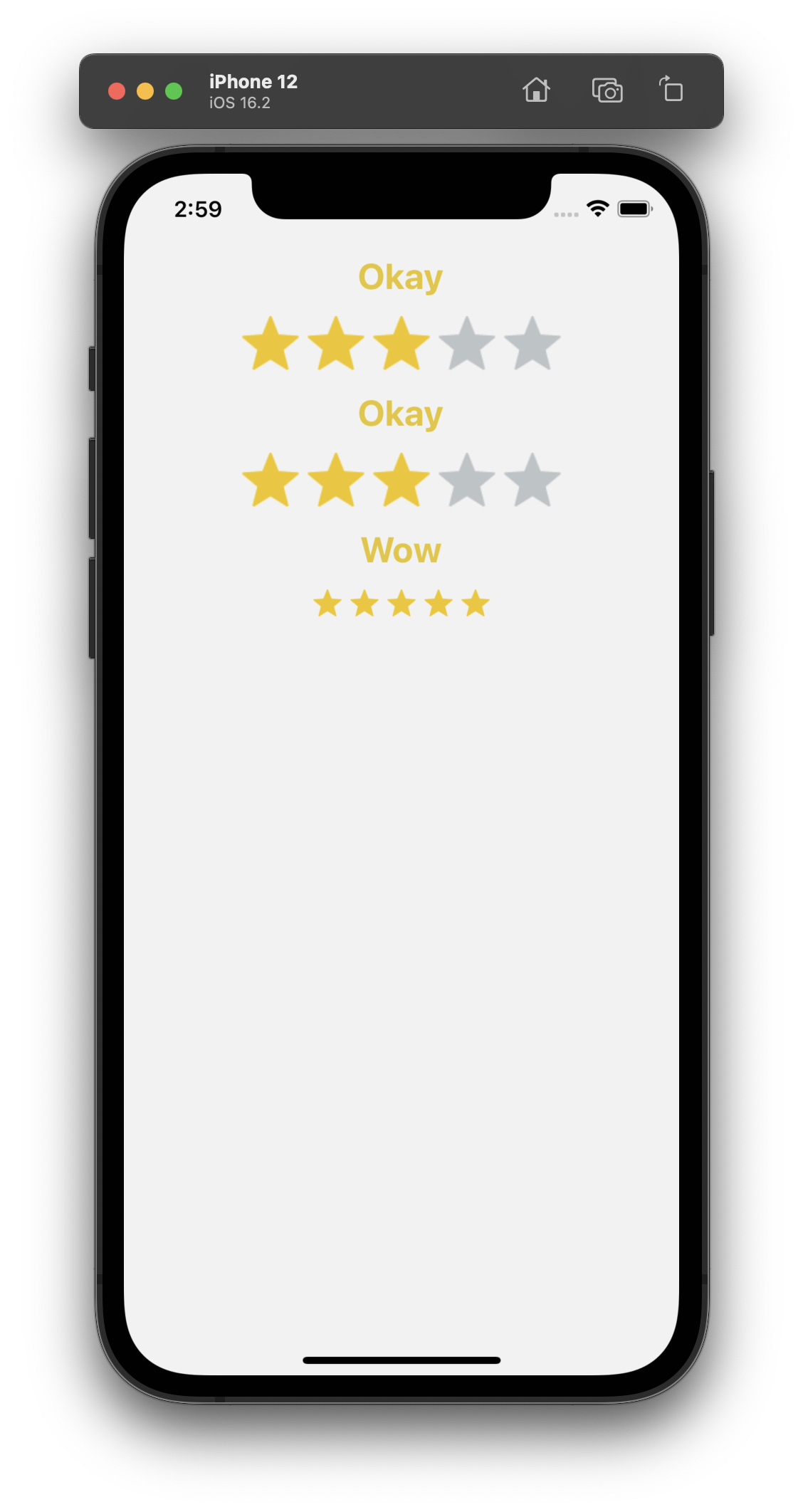HobbesUI
a rapid development environment for UI components
Think of Storybook but simplified and thought for ReactNative from scratch.
React Native development world, even related with reactjs, has important differences, one of those the UI Components velocity development.
Requirements
- react 18.2.0
- react-native ^0.72.0
- @react-navigation/native ^6.1.9
- @react-navigation/drawer ^6.6.6
- react-native-gesture-handler ^2.14.0
- react-native-reanimated ^3.6.1
- react-native-screens ^3.29.0
If you're using react-navigation in your app you can ignore these steps, otherwise you can install it as a dev dependency (if you don't want it or need it).
Here are the main steps to keep in mind when installing the required libraries, specifically react-navigation
note: you can and should check the oficial documentation, here you'll find the essential steps
drawer
Add the following import to the top file of the app (i.e. index or App)
import 'react-native-gesture-handler';
react-native-reanimated
Add the following to your babel.config.js
module.exports = {
...
plugins: [
"react-native-reanimated/plugin",
...
],
...
};
Android
-
MainActivityclass file
// JAVA
public class MainActivity extends ReactActivity {
// ...
@Override
protected void onCreate(Bundle savedInstanceState) {
super.onCreate(null);
}
// ...
}
// KOTLIN
class MainActivity: ReactActivity() {
// ...
override fun onCreate(savedInstanceState: Bundle?) {
super.onCreate(null)
}
// ...
}
Add next import to the top file of MainActivity class below your package statement
import android.os.Bundle;
iOS
$> cd ./ios
$> npx pod-install ios
Install
yarn install hobbesui --dev
Configuration
Because mobile environment is different from web, we can’t think of a solution like this in terms like storybook or styleguidist - or any similar tool - do.
So there’s a little manual configuration you need to set up, which also gives the freedom to decide under which circumstances you want to include hobbesui i.e. only development, also for staging, a different build for the designer, etc.
Add hobbesStories.(js|ts) file to the root of your project, into this file you need to import every file you create to render the components previews, i.e.
note: in previous version the name of the file was styleguidesToLoad it has been changed to keep naming consistency
import 'components/MyComponent/myComponent.hobbes';
import 'components/MyOtherComponent/myOtherComponent.hobbes';
import 'screens/Login/Login.hobbes';
*.hobbes.js extension is just a suggestion to differentiate your source code files from your hobbesui files, you could use any convention but be consistent
You need to set your app to render hobbesui:
import { Hobbes } from 'hobbesui';
...
function App(props) {
...
const hobbes = (
<Hobbes.UI />
);
...
}
Props (TS defs)
export type WelcomeProps = {
appDescription?: string;
styles?: {
container?: Styles;
isoContainer?: Styles;
isoText?: Styles;
isoDesc?: Styles;
button?: Styles;
buttonText?: Styles;
};
};
export interface IUIprops {
welcome?: WelcomeProps;
onLeaveHobbes?: () => void;
}
and set it on any part of your app route you consider relevant and configure your app to be able to access it.
note: you can use DevSettings to include it in the dev menu
Use it
hobbesui follows the Lego concept idea - there’re several ways to call it - and renders a View with your screen or component plus a nagivation drawer which allows you to categorize your components, i.e. components
(buttons, labels, colors, etc) scenes (think of the presentational side of an screen).
./sampleComp.hobbes.tsx
import React from 'react';
import { stories } from 'hobbesui/src/functional';
import MyComponent from './myComponent';
stories.add({
id: 'DEFAULT_STATE',
parent: 'FOO', // optional, default = 'parent'
group: 'BAR', // optional, default = 'group'
title: 'my component default state',
component: (props => (
<MyComponent
{...props /* in case you want to access navigation props */}
someProp="someProp"
/>
),
props: {name: value}, // optional
});
Because hobbesui uses react-navigation for its components rendering, you can also implement workflows between your scenes if you pass
them navigation props, this can accelerate and improve the app workflow/navigation between screens
...
const navigateTo: () => navigate(SCREEN_ID)
...
note: this is the id property when you add the component story
It can also be a helpful environment to implement a prototype
Use cases
Here are some ideas of what can be implemented to improve your UI development and the communication with the team, including the designer.
- Group of
unit componentse.g. button, input, divider - Group of
screense.g. Login, Activities - Group of
resourcese.g. FontFamilies, Icon sets - Group of
animations



